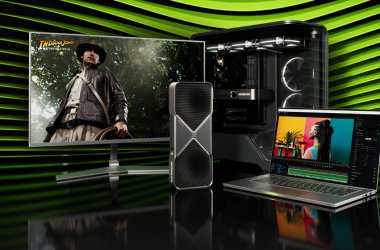 Chip and system-level improvements that Intel is making with the Ivy Bridge microarchitecture will result in laptops out next year with longer battery life and better graphics, the company said.
Chip and system-level improvements that Intel is making with the Ivy Bridge microarchitecture will result in laptops out next year with longer battery life and better graphics, the company said.
Laptops with Ivy Bridge will be engineered for CPUs, graphics accelerators, memory and screens to consume less power, the chip maker announced at the Intel Developer Forum (IDF) in San Francisco.
Laptops with Core processors based on Ivy Bridge will become available in the first half of next year. CPU and graphics processor will be integrated on a single chip, and deliver double the performance-per-watt compared to Core processors based on the Sandy Bridge microarchitecture, which are available in PCs today. Intel outlined further details about the Ivy Bridge microarchitecture in multiple sessions at IDF.
Besides making on-chip improvements, Intel is enlisting the help of companies such as LG Display, which at IDF showed the new Shuriken display that can refresh on its own. By leaving the CPU and other components idle, the net 450 milliwatts of power savings can add up to an hour to a laptop’s battery life, the company said.
“When I’ve got a static system … the CPU is asleep and the self-refresh is working in the screen itself,” said Mooly Eden, VP and GM of Intel’s PC client group.
“In addition, Ivy Bridge will support low-power DDR3 memory, which will consume less power than standard DDR3 memory used in most laptops today,” said Varghese George, senior principal engineer.
The DDR3L standard offers close to 15% power reduction compared to standard DDR3, according to the JEDEC (Joint Electron Device Engineering Council) standards-setting organisation.
The low-power enhancements come as Intel pushes a new category of thin-and-light laptops called ultrabooks. PC shipments have slowed down this year partly due to tablets and with ultrabooks, Intel hopes to bring tablet features such as touchscreens, instant boot capabilities and always-on connectivity to Ivy Bridge laptops.
In trying to press home Intel’s focus on power savings, CEO Paul Otellini looked at power savings with the Haswell microarchitecture, which is Ivy Bridge’s successor and will reach laptops in 2013.
“Haswell was designed to enable a 30% power reduction in the connected standby power over the currently shipping notebooks,” Otellini said.
He also said a new “system-level power management framework” on Haswell will produce a 20-fold power reduction in microprocessors, which could enable all-day laptop use and 10 days of always-connected standby on a single battery charge.
“But users will also see significant power and performance enhancements with Ivy Bridge, which will consume up to half the power at the same performance as current Sandy Bridge chips,” said Intel’s senior fellow Tom Piazza. Piazza said Ivy Bridge could alternately deliver double the performance on the same power consumption as Sandy Bridge chips, depending on how the chip is used.
The Ivy Bridge chips will be the first to use tri-gate, also called 3D, transistors, which will be up to 37 percent faster and consume less than half the power of 2D transistors on current chips. Transistors will be stacked on top of each other much like skyscrapers, rather than being placed next to each other as on current chips, the company said. The chips will be made using the 22-nm process, while current Sandy Bridge microprocessors are made using the 32-nm process, an Intel spokerperson added.
“The tri-gate breakthrough allows more features to be added to chips by placing transistors vertically or horizontally,” Intel’s George said.
“There is a lot of goodness that comes with the tri-gate, but also a lot of challenges,” he said. “For example tri-gate has some restrictions on the kind of sizes you can use in terms of how devices snap to a certain grid,” he added.
George also highlighted on-chip enhancements that could bring multimedia enhancements to Windows PCs. According to him, Ivy Bridge will be Intel’s first chip to support DirectX 11, a set of Microsoft tools to accelerate graphics tasks and bring a more realistic gaming experiences to PCs. Advanced Micro Devices(AMD) already offers on-chip DirectX 11 support with its current Fusion processors, which also combine the CPU and graphics processor on a single chip, analysts said.
Ivy Bridge is also backward compatible with previous Sandy Bridge sockets, which will help PC makers launch products faster and according to Intel the chip will also have integrated support for the Thunderbolt and USB 3.0 interconnect technologies.





